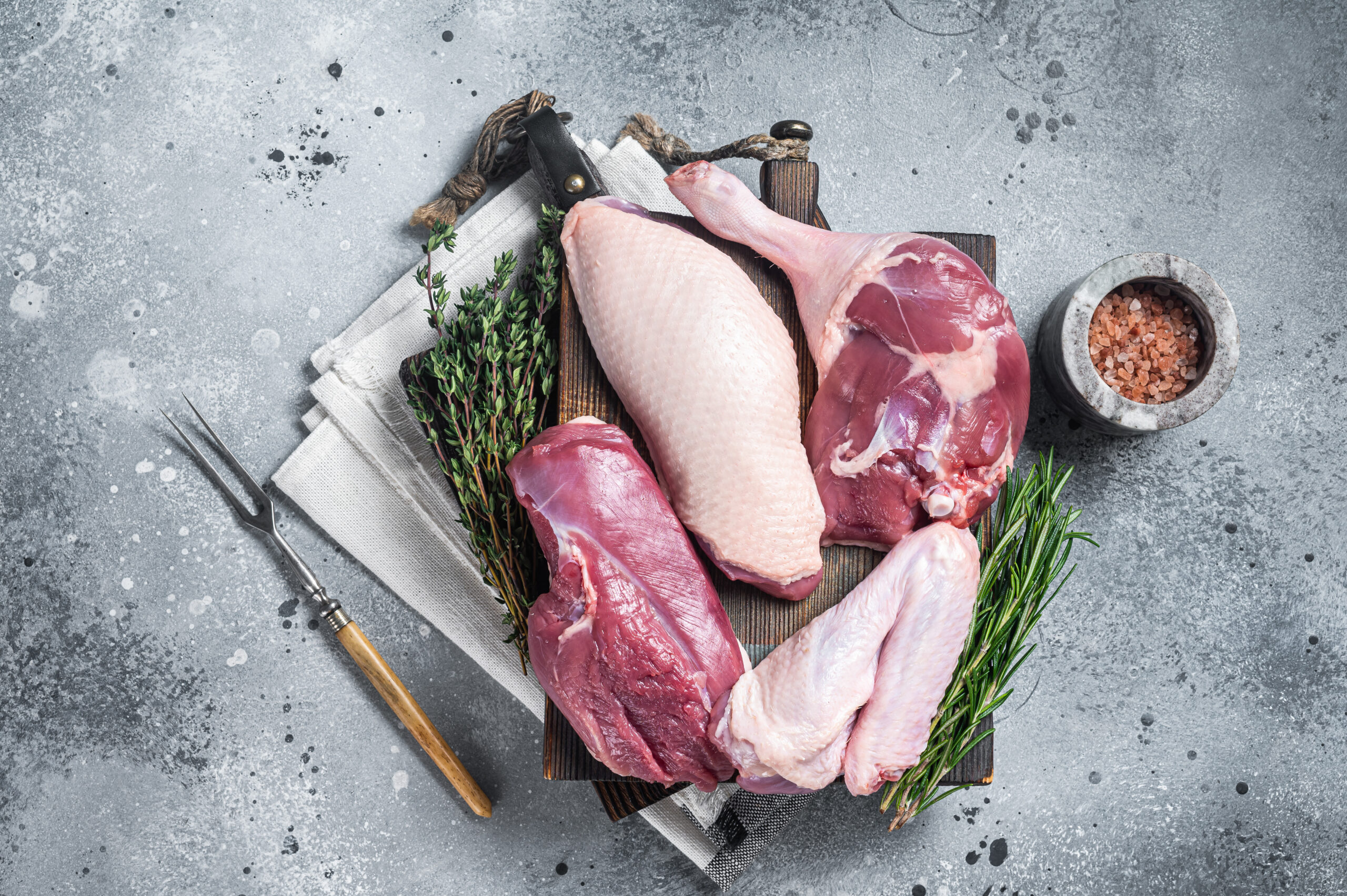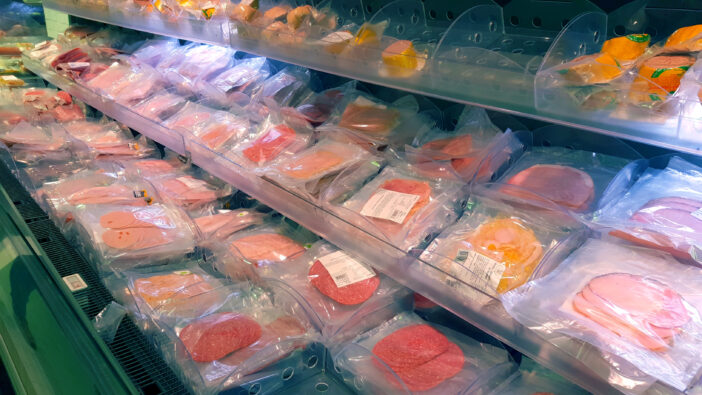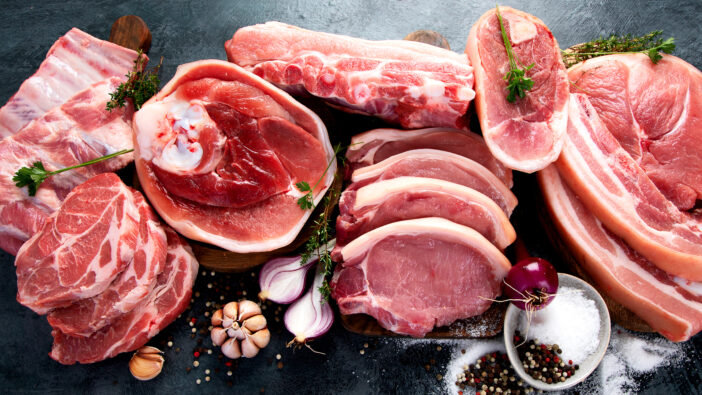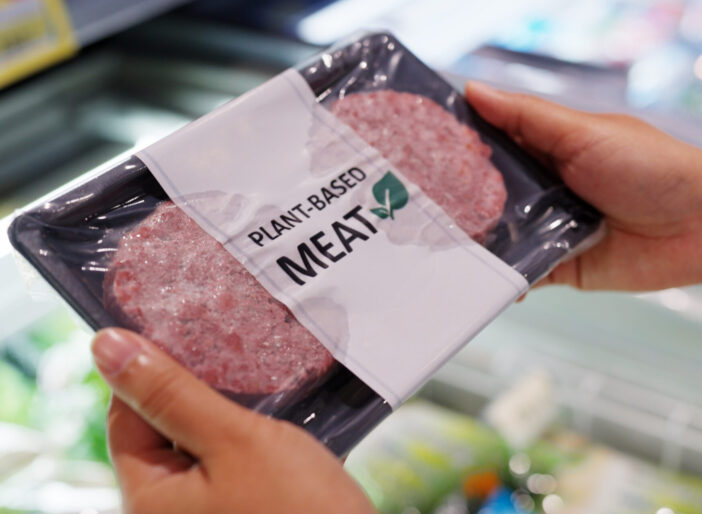7 Tips for Sustainable Meat to Help the Planet
Understanding sustainable meat practices and certifications helps you make eco-conscious choices, supporting animal welfare and a healthier planet.

Buying meat sustainably is more important than ever as we face environmental challenges. This guide will help you make informed choices that benefit both your health and the planet.
Disclosure: As an Amazon Associate, this site earns from qualifying purchases. Thank you!
Understand the Basics of Sustainable Meat

Sustainable meat is vital for a healthy planet and for staying environmentally conscious. Here’s what you need to know.
What Is Sustainable Meat?
Sustainable meat comes from animals raised in ways that are kind to the environment, humane, and efficient. This often means:
- Rotational Grazing: Livestock rotates through different pastures, which improves soil health and reduces overgrazing.
- Grass-Fed: Animals eat natural diets of grass or hay, not grain, leading to less resource-intensive farming.
- Organic Feed: Livestock is fed organic, non-GMO feed, which reduces pesticide use and promotes biodiversity.
- Lower Emissions: Grass-fed animals often emit less methane, a potent greenhouse gas.
- Biodiversity: Organic farms promote wildlife habitats and plant diversity.
- Healthier Options: Sustainable meats generally contain fewer antibiotics and hormones, which is better for your health.
Identify Sustainable Meat Labels and Certifications
Knowing which labels to look for can make choosing sustainable meat easier.
USDA Organic
Opt for USDA Organic labels, which guarantee no antibiotics or hormones. Farmers follow strict guidelines to promote animal health and wellbeing. Animals must have access to the outdoors and be fed organic feed.
Certified Humane
Choose Certified Humane meats to ensure humane treatment. This certification requires ample space, shelter, and gentle handling. Animals cannot be confined to cages, crates, or tie stalls and must be allowed to engage in natural behaviors.
Global Animal Partnership
Look for Global Animal Partnership (GAP) certifications with multiple levels. Each level indicates varying standards of animal welfare, from enriched environments to pasture access. Higher levels reflect the most comprehensive animal care practices.
Know the Best Sources for Buying Sustainable Meat

Find the best places for sustainable meat. Explore these top sources for eco-friendly options.
Local Farmers Markets
Support local farmers. Farmers’ markets connect you with producers who use sustainable practices. Ask about their farming methods to ensure you’re getting the best quality.
Community Supported Agriculture (CSA) Programs
Join a CSA program. These programs let you buy shares of a farm’s harvest, including meat. You get fresh, seasonal products directly from ecological farms.
Specialty Online Retailers
Shop online for exclusive finds. Specialty retailers like ButcherBox and Crowd Cow offer sustainably sourced meat delivered to your door. These platforms provide detailed sourcing information for transparency.
Evaluate the Environmental Impact of Different Meats

Considering the environmental impact of different meats helps you make sustainable choices.
Beef and Its Environmental Considerations
Beef production has a significant environmental footprint. Cows emit methane, a potent greenhouse gas. Beef also requires extensive land and water resources. Opt for grass-fed or regenerative agriculture beef, which can enhance soil health and biodiversity. According to a 2018 study, grass-fed beef can reduce emissions by up to 60%.
Poultry and Environmental Sustainability
Poultry, including chicken and turkey, generally has a lower environmental impact compared to beef. Chickens require less land and emit fewer greenhouse gases. However, intensive poultry farming can lead to deforestation and groundwater pollution. Seek pasture-raised or organic poultry to minimize these impacts. Certifications like Certified Humane ensure higher welfare and environmental standards.
Pork and Eco-Friendliness
Pork lies between beef and poultry in terms of environmental impact. Pigs produce less methane than cows but still require substantial feed and water. Factory farming of pigs often involves pollution and antibiotic overuse. Choose pasture-raised or heritage breed pork for more eco-friendly options. Look for Global Animal Partnership or Animal Welfare Approved labels.
Consider Plant-Based or Lab-Grown Alternatives

Benefits of Plant-Based Meat Alternatives
Plant-based meats, like Beyond Meat and Impossible Foods, are rising in popularity. They use fewer resources and produce lower greenhouse gas emissions. Choosing these options can decrease deforestation and water use. They also reduce animal suffering and slaughter.
Innovations in Lab-Grown Meats
Lab-grown meats, also known as cultured meats, offer an innovative solution. Companies like Memphis Meats and Mosa Meat create meat from animal cells. This process avoids animal slaughter and reduces methane emissions. Lab-grown meat requires less land and water, making it a sustainable choice for future meat consumption.
Learn How to Store and Prepare Sustainable Meat
Knowing how to store and cook sustainable meat properly maximizes its flavor while reducing waste.
Proper Storage Techniques
- Use Airtight Containers: Store meat in airtight containers to prevent spoilage and contamination. Use glass or BPA-free plastic.
- Keep it Cold: Refrigerate meat at 32-40°F or freeze at 0°F. Label with purchase date to track freshness.
- Avoid Cross-Contamination: Store meat on the lowest fridge shelf to prevent drips onto other foods. Use separate cutting boards and utensils for meat.
Sustainable Cooking Methods
- Slow Cook: Use methods like braising or roasting to enhance flavors and tenderness of tougher cuts, reducing waste.
- Minimize Energy Use: Cook with energy-efficient appliances. Opt for pressure cookers or induction stoves.
- Utilize All Parts: Incorporate bones and scraps into broths or stocks. Maximize meat utility by using organ meats and lesser-known cuts.
- Proper handling and cooking ensure you get the best out of your sustainable meat choices.
Frequently Asked Questions
What are sustainable meat practices?
Sustainable meat practices include methods like rotational grazing and using organic feed. These practices help to maintain the health of the environment and the wellbeing of the animals. Common sustainable meat options are grass-fed beef, pasture-raised poultry, and heritage breed pork.
What certifications should I look for when buying sustainable meat?
Look for certifications like Certified Humane and Global Animal Partnership. These certifications ensure that the meat you are buying meets specific standards for animal welfare and sustainability.
What are some popular plant-based meat alternatives?
Popular plant-based meat alternatives include products from brands like Beyond Meat. These alternatives are designed to mimic the taste and texture of real meat while being more environmentally friendly.
What are lab-grown meats?
Lab-grown meats are created by culturing animal cells in a laboratory setting, eliminating the need to raise and slaughter animals. Companies like Memphis Meats are pioneers in this field.
How should I store sustainable meat to maximize its flavor?
Store sustainable meat in airtight containers and keep it refrigerated at specific temperatures (usually between 32°F and 40°F). This helps in preserving its flavor and extending its shelf life.
What are effective cooking methods for sustainable meat?
Effective cooking methods for sustainable meat include braising, roasting, and grilling. These methods help to bring out the best flavors while ensuring the meat is cooked properly.
How can I avoid cross-contamination when handling sustainable meat?
To avoid cross-contamination, use separate cutting boards and utensils for raw and cooked meats. Always wash your hands, surfaces, and tools thoroughly after they come into contact with raw meat.
Why is proper handling of sustainable meat important?
Proper handling of sustainable meat is crucial to ensure food safety and maximize its flavor. It involves correct storage temperatures, avoiding cross-contamination, and using effective cooking techniques.





